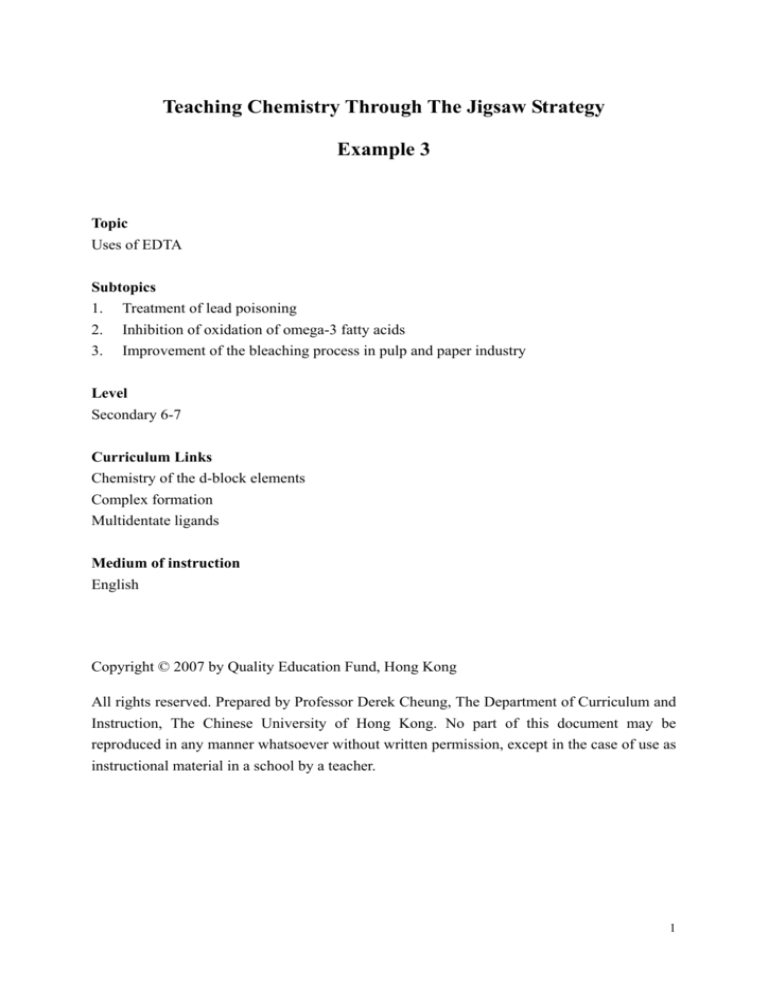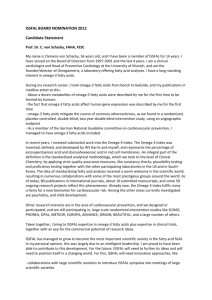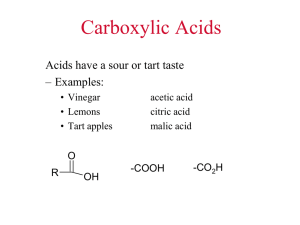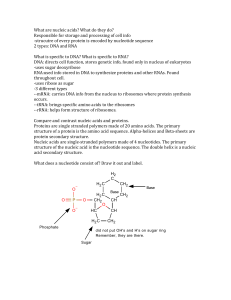
Teaching Chemistry Through The Jigsaw Strategy
Example 3
Topic
Uses of EDTA
Subtopics
1. Treatment of lead poisoning
2. Inhibition of oxidation of omega-3 fatty acids
3. Improvement of the bleaching process in pulp and paper industry
Level
Secondary 6-7
Curriculum Links
Chemistry of the d-block elements
Complex formation
Multidentate ligands
Medium of instruction
English
Copyright © 2007 by Quality Education Fund, Hong Kong
All rights reserved. Prepared by Professor Derek Cheung, The Department of Curriculum and
Instruction, The Chinese University of Hong Kong. No part of this document may be
reproduced in any manner whatsoever without written permission, except in the case of use as
instructional material in a school by a teacher.
1
1.
Treatment of lead poisoning
Lead is a toxic metal. Although lead plays no role in the human biological systems, it can be
absorbed into the body through a gastrointestinal route or inhalation. Workers at lead smelting
factories or battery recycling plants are potential victims. Other occupations with exposure to
lead include house painting, automotive repair, and ceramics. For example, according to South
China Morning Post (27 March 2007), a smelting factory in Hunan, China was shut down
after it had been open for 14 years. The land and water near the smelting plant had been
seriously contaminated with lead. More than 30 villagers suffered from lead poisoning. Four
villagers died of cancer. Children had symptoms such as stomach pain, poor memory, and
physical weakness.
Young children can easily absorb lead when they are exposed to decaying fragments of
lead-based paint in old houses. In the USA, flaking, dusting, and peeling leaded paint is the
main source of lead exposure in children. There is no lead in petrol sold in Hong Kong, but
lead particles emitted by cars in the 1990s may still persist in some soil near roadways. Tap
water may also be contaminated with lead if there are lead-soldered pipes or lead-containing
taps inside old buildings.
In 2007, 7% of children (aged 0-6 years) in Beijing, China have excessive lead content in
their blood. Because most children with slightly high blood lead levels show few symptoms,
their parents generally did not recognize the problem. Following absorption, lead enters the
blood that distributes it to various tissues and organs such as the liver, lungs, kidneys, bones,
teeth, and brain. Children with serious lead poisoning can suffer permanent brain damage.
Other symptoms include abdominal pain, loss of appetite, vomiting, constipation, headache,
and coma. To treat lead poisoning, calcium disodium ethylenediamine tetra-acetate,
CaNa2EDTA, may be injected within a vein to let the compound go into the blood stream.
2O
C
CH2
O
CH2
O
CH2
N
C
CH2
N
CH2
Ca
O
O
C
O
H2C
O
C
O
CaNa2EDTA is a metal chelating agent. Pb2+ ions can displace the weakly bonded Ca2+ ions in
CaNa2EDTA to form a highly soluble complex, [PbEDTA]2-. The complex is filtered out of
2
the blood by the kidneys and excreted in the urine. This kind of treatment for lead poisoning
is called chelation therapy.
Pb2+ + [CaEDTA]2- ⇌ Ca2+ + [PbEDTA]22O
C
CH 2
O
CH 2
O
CH 2
N
C
CH 2
N
CH 2
Pb
O
O
C
O
H2C
O
C
O
CaNa2EDTA should not be taken orally because lead will be absorbed from the gut.
Dimercaptosuccinic acid is an oral chelating agent approved for treatment of lead poisoning.
However, CaNa2EDTA cannot cross the blood-brain barrier. For patients with high lead
content in the brain, dimercaprol should be used.
O
SH
C
HS
CH2
OH
CH
HC
CH
HS
OH
C
O
dimercaptosuccinic acid
H2C
SH
OH
dimercaprol
The major harmful effect of CaNa2EDTA is degeneration of kidney cells, especially with
high-dose and prolonged therapy. Other side effects include numbness, nasal congestion,
prolonged sneezing, fatigue, thirst, fever, headache, nausea, vomiting, and urinary urgency.
Although CaNa2EDTA and Na2EDTA are related compounds, Na2EDTA should not be used to
treat lead poisoning because it will bind with Ca2+ ions. As a result, the body will lose a lot of
calcium and the effect can be fatal.
Ca2+ + EDTA2- Æ [CaEDTA]2- + 2 H+
Questions
1. All causes of lead poisoning are environmental. Why?
2. Why can CaNa2EDTA cure lead poisoning?
3. Why is Na2EDTA not suitable for treating lead poisoning?
3
2.
Inhibition of oxidation of omega-3 fatty acids
The omega-3 (ω-3) fatty acids found in fish oil are good for the health. Benefits include
reduced cholesterol in the bloodstream, protection against heart disease, and improved brain
and eye function in children. Trials have also indicated that omega-3 fatty acids may help to
protect against cancer by making cells with a healthy membrane.
Omega-3 fatty acids are polyunsaturated carboxylic acids with a long hydrocarbon chain. For
humans, the three most nutritionally important omega-3 fatty acids are α-linolenic acid,
eicosapentaenoic acid, and docosahexaenoic acid. These three molecules have a common
chemical structure; that is, there is a carbon-carbon double bond between the third carbon and
fourth carbon. The C=C bonds are in the cis-configuration (i.e., the two hydrogen atoms are
on the same side of the double bond). The structure of α-linolenic acid is shown below:
O
H
H3 C
H
C
CH2
H
H
C
C
CH2
H
C
H
C
CH2
CH2
C
CH2
CH2
CH2
CH2
CH2
C
CH2
O
H
α-linolenic acid
α-linolenic acid is particularly essential because the human body cannot make it. Therefore,
we have to obtain α-linolenic acid from food such as salmon, tuna, flaxseeds, walnuts, and
soybean. The human body can make eicosapentaenoic acid and docosahexaenoic acid from
α-linolenic acid (all the other necessary omega-3 fatty acids??). So, it is most important to get
sufficient α-linolenic acid from our diet.
To improve the nutritional value of food products, many food companies are adding omega-3
fatty acids to their products such as bread, pizza, yoghurt, fruit juice, milk, and infant
formula/milk powder. But omega-3 fatty acids are easily oxidized by exposure to heat during
food processing. The oxidation reactions are catalyzed by metal ions.
The lipids in many foods exist in the form of small oil droplets dispersed in water. In 2006,
scientists found that disodium ethylenediamine tetra-acetate (Na2EDTA) can effectively
inhibit oxidation of omega-3 fatty acids in salmon oil-in-water emulsions by removing Fe3+
and Fe2+ ions from the oil droplet surface. They found that the addition of Na2EDTA to food
before heat-processing is more effective than adding Na2EDTA after heat-processing. Thus,
high-quality heat-processed salmon oil can be produced with the help of Na2EDTA, which not
only serves as a chelating agent but also an anti-oxidant in food processing.
4
O
O
-
O
C H2 C
N
O
-
(CH2)2
CH2 C
O
CH2 C
O
-
N
C H2C
O
-
O
The structure of ethylene diamine tetra-acetate ion
Fe3+ + EDTA4- ⇌ [FeEDTA]Fe2+ + EDTA4- ⇌ [FeEDTA]2Without Na2EDTA, the oxidation of omega-3 fatty acids in salmon oil will result in products
that can damage the flavour and nutritional value of salmon oil. More importantly, the
oxidation of omega-3 fatty acids will produce free radicals. Doctors believe that these free
radicals may cause cancers.
-
2-
O
O
C
CH 2
O
CH 2
N
C
N
CH 2
O
C
O
H 2C
O
CH 2
O
CH 2
N
C
CH 2
N
CH 2
Fe
O
O
C
O
H 2C
O
C
C
O
O
Structure of [FeEDTA]-
CH 2
O
CH 2
Fe
O
C
CH 2
O
Structure of [FeEDTA]2-
However, many people do not eat enough omega-3 fatty acids. The symptoms of deficiency of
omega-3 fatty acids include fatigue, dry skin, brittle hair and nails, constipation, frequent
colds, depression, poor concentration, and joint pain.
Questions
1.
What are the chemical characteristics of omega-3 fatty acids?
2.
Why do food companies want to prevent the oxidation of omega-3 fatty acids in
processed food?
3.
Why can EDTA inhibit the oxidation of omega-3 fatty acids in heat-processed food?
5
3.
Improvement of the bleaching process in pulp and paper industry
When factories make paper from trees, bleaching is a very important step. High-quality
papers require a pulp which does not discolour during storage or go yellow when exposed to
sunlight.
To protect the environment, chlorine gas, chlorine dioxide, or other chlorine compounds are
no longer used by some paper manufacturers. The use of chlorine gas as a bleaching agent is
the most harmful for the environment because chlorine gas releases dioxins and other toxic
waste materials during the bleaching process. The harmful effects of dioxins on humans
include abnormal development of teeth and damage to the immune systems.
Common bleaching agents of today are hydrogen peroxide (H2O2) and ozone (O3), which
break down into harmless water and oxygen. For example, Nordic Paper, a paper factory in
Sweden, has replaced chlorine with H2O2 to whiten the pulp. Nordic Paper is the world’s
largest manufacturer of greaseproof paper (http://www.nordic-paper.com/products.asp).
However, metal ions (e.g., Mn2+, Cu2+, and Fe3+) in the pulp can lower the efficiency of
hydrogen peroxide because they catalyze the decomposition of hydrogen peroxide. Metal ions
also promote the formation of hydroxyl radical (HO·), which destroys the cellulose fiber.
To deactivate metal ions, Nordic Paper has used ethylenediaminetetraacetic acid (EDTA) to
form anionic complexes with metal ions in the pulp suspension. EDTA is a hexadentate
chelating agent produced as salts such as tetrasodium EDTA (Na4EDTA). Chemical
companies synthesize EDTA by reacting ethylenediamine with methanal, cyanide and sodium
hydroxide to produce Na4EDTA. Other salts of EDTA (e.g., K4EDTA, CaNa2EDTA) are
produced from Na4EDTA.
O
O
-
O
C H2 C
N
O
-
C H2C
O
(CH2)2
CH2 C
O
CH2 C
O
-
N
-
O
The structure of ethylene diamine tetra-acetate ion
Salts of EDTA are useful to get rid of metal ions in the pulp suspensions because the EDTA
molecule can lock a metal ion into a “cage” structure, forming a water-soluble anionic
complex. The anionic complexes of Mn2+, Cu2+, and Fe3+ ions can be washed out prior to
6
bleaching. Nordic Paper reported that with the aid of EDTA, they can increase the efficiency
of every kg of hydrogen peroxide with 50%.
2O
C
CH2
O
CH2
O
CH2
N
C
CH2
N
CH2
Mn
O
O
C
O
H 2C
O
C
O
Complex ion formed by manganese(II) ions and EDTA
Unfortunately, EDTA is not easily degradable in nature. It is one of the organic pollutants
found in the highest proportions in surface waters in Europe. Thus, Nordic Paper has applied
new biotechnology to treat the EDTA in wastewater. Special bacteria have to be used to break
down EDTA molecules into simple chemicals such as CO2, H2O, and NH4+
(http://www.biored.se/index_en.html).
Every year, about 30% of EDTA sold worldwide is used by the pulp and paper industry
(http://www.dow.com/productsafety/finder/edta.htm). This proportion is expected to increase
because more and more paper factories want to whiten the pulp without the use of chlorine
gas or chlorine compounds.
Questions
1.
Why is chlorine gas seldom used in the pulp and paper industry?
2
Why can metal ions low the efficiency of hydrogen peroxide during the pulp bleaching
process?
3.
Why is EDTA useful to reduce the amount of hydrogen peroxide used in the pulp
bleaching process?
7









